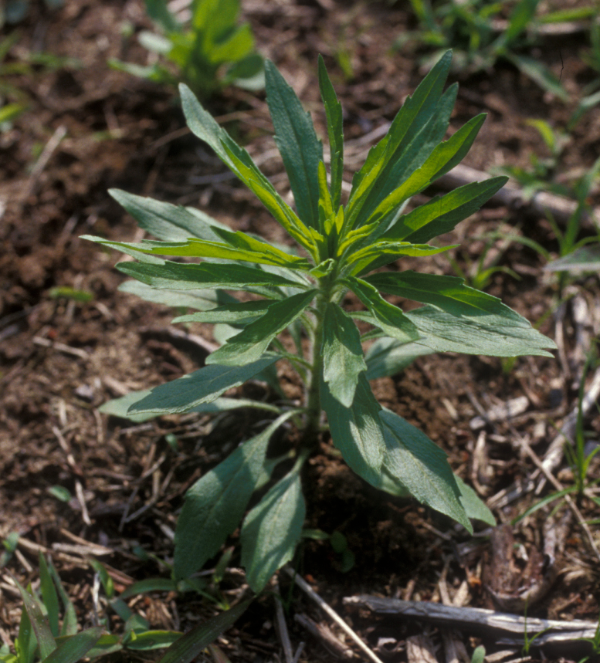
Horseweed (marestail) – Conyza canadensis
Conyza canadensis (L.) Cronq.
Asteraceae (Aster family)
MI Status
Native
Life cycle
Erect winter or summer annual.
Leaves
Cotyledons are egg- to spatula-shaped and hairless. Seedling leaves initially develop from a basal rosette; mature leaves are alternate and numerous, and crowded along an erect central stem. Leaves are hairy and linear to lance-shaped with smooth to toothed margins, gradually becoming smaller toward the top of the plant.
Stems
Erect, hairy central stem arises from a basal rosette, then branches to flower, reaching up to 7 feet tall. Flowering branches resemble a horse’s tail.
Flowers and fruit
Numerous clusters of small, white flower heads are found on many short branches near the top. Each seedhead is capable of producing thousands of small seeds; each seed is enclosed in a single-seeded, wind-disseminated fruit.
Reproduction
Seeds.




Other Documents in this Series
You Might Also Be Interested In
-
MSU Extension article revision and retirement guidelines
Published on May 25, 2021
-
MSU Extension Article Writing Toolkit
Published on January 18, 2021
-
ANR Communications & Marketing Project Request Form
Published on October 22, 2018
-
Creating Top Level Navigation Menu Links in dotCMS
Published on August 3, 2017
-
Canva MSU Extension and Michigan 4-H social media graphic templates how-to
Published on May 9, 2020
-
CANR provides rankings on department, unit initiatives around DEI
Published on April 26, 2022
Accessibility Questions:
For questions about accessibility and/or if you need additional accommodations for a specific document, please send an email to ANR Communications & Marketing at anrcommunications@anr.msu.edu.



 Print
Print Email
Email



